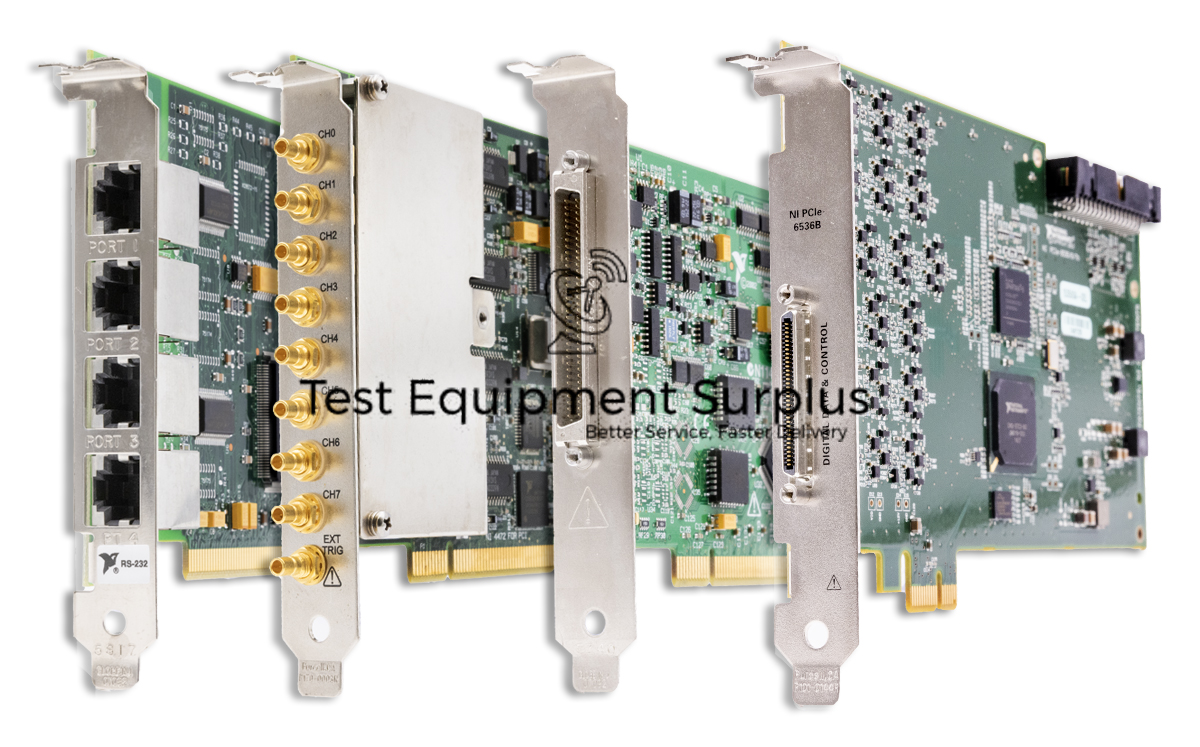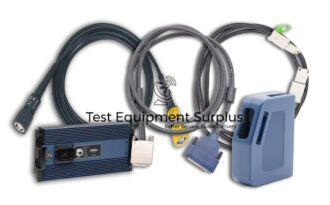Description
The National Instruments PCI-7830 Multifunction Reconfigurable I/O Module is a sophisticated piece of hardware that provides flexible I/O options thanks to its inclusion of a user-programmable FPGA, allowing for custom I/O operations that can be tailored using the LabVIEW FPGA Module. This module is not only versatile but also ensures reliable reference grounding by interconnecting AIGND, AOGND, and DGN through a Simple Input Ground.
One of the key features of the PCI-7830 is its RTSI Trigger Lines, which can be set up either as input or output, with the stipulation that only one device should drive a particular line at any given time, ensuring clear and precise signal transmission. Furthermore, the module’s compatibility with the PXI Backplane is highlighted by the capability to route the left local bus lines from Slot 2 to the star trigger lines of up to 13 other peripheral slots in a two-part PXI system, enhancing its integration and synchronization capabilities.
For developers and engineers, the LabVIEW FPGA Module is a valuable tool that allows for the creation or acquisition of new VIs, which opens up a plethora of opportunities for custom functionality tailored to specific application needs. Moreover, the PCI-7830’s flash memory plays a crucial role in maintaining system accuracy by storing calibration results and automatically loading calibration constants upon power-up, thus simplifying maintenance and ensuring consistent performance.
| Specification | Detail |
|---|---|
| Product Name | National Instruments PCI-7830 Multifunction Reconfigurable I/O Module |
| Functionality | Reconfigurable I/O with FPGA, customizable via LabVIEW FPGA Module |
| FPGA | Includes user-programmable FPGA for custom I/O operations |
| Reference Ground | Simple Input Ground; AIGND, AOGND, and DGN are interconnected |
| RTSI Trigger Lines | Configurable as either input or output, one device drives a line at a time |
| PXI Backplane Compatibility | Left local bus lines from Slot 2 routed to star trigger lines of up to 13 peripheral slots in a two-part PXI system |
| LabVIEW FPGA Module | Allows creation or acquisition of new VIs for custom functionality |
| Flash Memory | Stores calibration results; automatically loads calibration constants on power-up |
Question 1: How does the National Instruments PCI-7830 Multifunction Reconfigurable I/O Module’s user-programmable FPGA and integration with the LabVIEW FPGA Module allow for custom I/O operations tailored to specific application needs?
Answer 1: The National Instruments PCI-7830 Multifunction Reconfigurable I/O Module leverages the LabVIEW FPGA Module to enhance its I/O customization capabilities by allowing users to program the onboard FPGA with custom I/O operations tailored to their specific application needs, thus offering a high degree of flexibility in the design of their control and measurement systems.
Question 2: What are the advantages of the user-programmable FPGA in the National Instruments PCI-7830 Multifunction Reconfigurable I/O Module for customizing I/O operations?
Answer 2: The National Instruments PCI-7830 Multifunction Reconfigurable I/O Module’s user-programmable FPGA, in conjunction with the LabVIEW FPGA Module, allows users to create custom I/O operations by enabling them to design and implement their own hardware-level logic tailored to specific application requirements, thereby providing a high degree of flexibility and control over the module’s functionality.
Question 3: How do the RTSI Trigger Lines on the National Instruments PCI-7830 Multifunction Reconfigurable I/O Module ensure clarity and precision in signal transmission when configured as inputs or outputs?
Answer 3: The user-programmable FPGA in the National Instruments PCI-7830 Multifunction Reconfigurable I/O Module offers the advantage of allowing users to tailor custom I/O operations to their specific needs using the LabVIEW FPGA Module, enabling a high degree of flexibility and adaptability in hardware configuration and functionality for various applications.
Question 4: How does the National Instruments PCI-7830 Multifunction Reconfigurable I/O Module ensure accurate and clear signal transmission with its RTSI Trigger Lines?
Answer 4: The National Instruments PCI-7830 Multifunction Reconfigurable I/O Module ensures accurate and clear signal transmission with its RTSI Trigger Lines by allowing them to be configured either as input or output while stipulating that only one device should drive a particular line at any given time to avoid signal conflicts and ensure precision.
Question 5: How does the National Instruments PCI-7830 Multifunction Reconfigurable I/O Module use the LabVIEW FPGA Module to enhance its I/O customization capabilities?
Answer 5: The RTSI Trigger Lines on the National Instruments PCI-7830 Multifunction Reconfigurable I/O Module ensure clarity and precision in signal transmission when configured as inputs or outputs by allowing only one device to drive a particular line at any given time, thus preventing signal conflicts and ensuring unambiguous communication.



